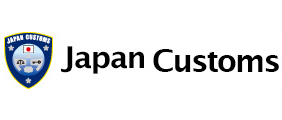1105 Types of Tariffs(FAQ) : Japan Customs
(1)Duty rates enacted by laws (statutory tariff)
- General Rate: General rates are set, taking the difference between domestic and foreign prices and the truly necessary protection standard into account with a long-term viewpoint based upon conditions of domestic industries and other things.
- Temporary Rate: Temporary rates are applicable only for a certain period of time in order to modify general rates to meet policy needs or for other reasons. They are applied in preference to general rates.
- Preferential Rate: Preferential rates, aiming to support developing countries/territories, are applicable to products originating from designated developing countries/territories which satisfy certain conditions, such as the country of origin status, etc. They are set not greater than the MFN (Most-Favored-Nations) applied tariff (either statutory tariff (excluding preferential tariff and simplified tariff) or WTO bound tariff (whichever lower)) as an exception of the MFN principle.
- Simplified Rate Applicable to Imported Personal Effects: Simplified rates are applicable to the accompanied and unaccompanied goods of an entrant into Japan. Customs duty, consumption tax and other internal taxes are laid down on a combined form.
- Simplified Rate on Small Packages: When the total value of imported goods (excluding the accompanied and unaccompanied goods of entrants) does not exceed 200,000 yen per importation, simplified rates on the small packages are applicable.
- WTO Bound Rate: Any customs duty rate in excess of WTO bound one set forth in the schedule of concessions under the WTO Agreement is not applicable to products from all the WTO member countries and regions. Hence, MFN applied rate, whichever of WTO bound rate and statutory rate is lower, is applicable to products from all the WTO member countries or regions as well as non-WTO member countries with the MFN status provided under the bilateral trade agreements with Japan (excluding Economic Partnership Agreements).
| (Note) | The WTO bound rates may be applicable to certain non-member countries or regions of the WTO with which Japan has not concluded bilateral trade agreements (excluding Economic Partnership Agreements), if those countries give Japan effective MFN status based on the reciprocity principle. This equivalent treatment may be made through due consideration to diplomatic relations with the countries and regions. (Beneficial Tariff System) |
- Rates Based on Economic Partnership Agreements (EPA Rates): EPA rates are applied to goods imported from a Party of EPA if the goods satisfy the conditions provided in each EPA such as Rules of Origin. As of December 15, 2024, EPAs and Related Initiatives with Singapore, Mexico, Malaysia, Chile, Thailand, Indonesia, Brunei, ASEAN,
the Philippines, Switzerland, Viet Nam, India, Peru, Australia, Mongolia, CPTPP, the European Union, the United States, the United Kingdom, and RCEP have entered into force.
| (Note1) | Member states of ASEAN are Brunei, Cambodia, Indonesia, Laos, Malaysia, Myanmar, the Philippines, Singapore, Thailand and Viet Nam. | |
| (Note2) | Member states of CPTPP are Japan, Mexico, Singapore, New Zealand, Canada, Australia, Viet Nam, Peru, Malaysia, Chile, Brunei and the United Kingdom. | |
| (Note3) | Member states of RCEP are Japan, Brunei, Cambodia, Indonesia, Laos, Malaysia, the Philippines, Singapore, Thailand, Viet Nam, China, Republic of Korea, Australia, and New Zealand. |
(Reference) Priority Order of Tariff Application
In principle, customs duties are applied to the preferential rate, WTO bound rate, temporary rate, and general rate, in that order of priority. Note that preferential rates are only applicable to products originating from designated beneficiaries and satisfying certain conditions, such as the country of origin status, etc. Also, WTO bound rates are applicable when they are lower than temporary rates or general rates.If EPA rates are lower than or equal to the preferential rates, the preferential rates are not applicable.
For example, applicable rates on coffee, roasted and non-decaffeinated, coded as 0901.21 originating from Viet Nam are as follows; Applicable rates are 12% (WTO bound rate), 10% (Preferential rate) or free (EPA rate (CPTPP)). When the product meets certain conditions stipulated in the EPA, the EPA rate is applied. If the product does not meet the conditions, the WTO bound rate is applied(Preferential rate is not applicable because EPA rate(free) is lower than preferential rate(10%).).
(Note) The above rates are as of April 1, 2025.
(Article 3 of the Customs Law, Article 3, 3-2, 3-3, 5 and Annex of the Customs Tariff Law, Article 2, Article 8-2, Annexes 1, 1-3, 2, 3, 4 and 5 of the Temporary Tariff Measure Law)
For consultations on customs procedures, please contact the nearest Customs Counselor.
Please see No. 9301 for inquiries.

